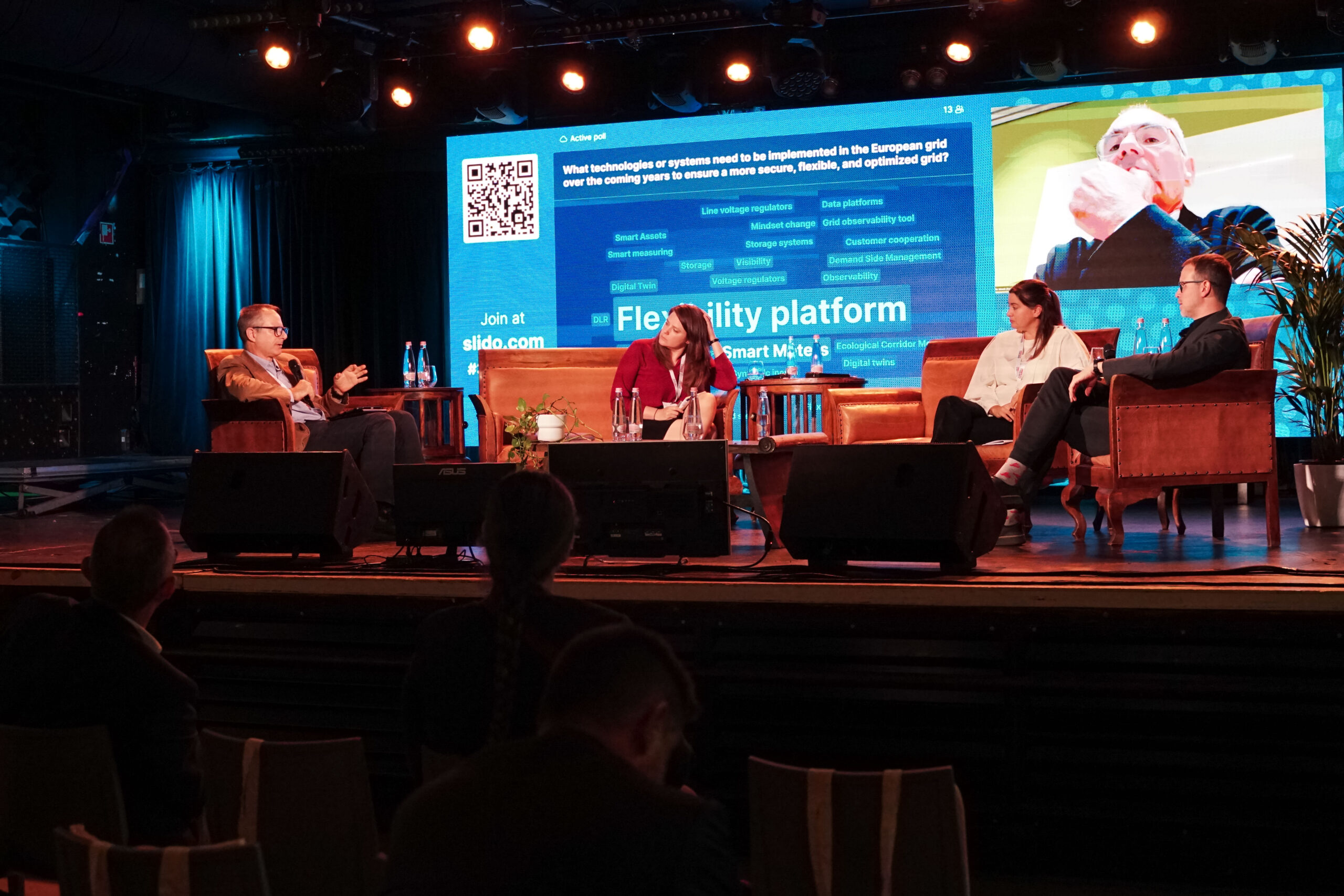30.09.2024
Presentation of the STREAM and BRIDGE activities at the CINEA SmartGrids PCI summit, Budapest
At the CINEA SmartGrids PCI summit in Budapest, IRI UL’s director, Andrej Gubina, presented experiences from the HE STREAM and H2020 COMPILE projects, focusing on flexibility provision and associated business models. Gubina also shared insights from the BRIDGE BM Working Group, which sparked a lively discussion among the panel members. Moderated by Dr. Eduardo Vega-Fanjul from CINEA, the panel also featured contributions from distinguished experts, including Prof. Antonello Monti of RWTH Aachen, Flore Patrat-Delon of E.On and DSO Europe, and Layla Sawyer from CurrENT.
The Smart Grids Technologies panel highlighted key innovations for the future of Europe’s electricity grid. These projects, known as Smart Electricity Grid Projects of Common Interest (SG PCIs), are essential in improving the integration of renewable energy, enhancing storage solutions through home and community batteries, and fostering cross-border cooperation between Transmission System Operators (TSOs) and Distribution System Operators (DSOs).
One of the central themes of the panel was how to scale and replicate technologies across borders to create a more resilient grid. Gubina and his fellow panellists discussed challenges such as regulatory hurdles, financial barriers, and the need for widespread adoption of innovative technologies developed under programs like Horizon 2020 and Horizon Europe.
The panel also addressed the role of artificial intelligence and machine learning in optimizing grid operations. By leveraging AI for system control and modelling market mechanisms, operators can improve efficiency and asset management. This, combined with advanced monitoring technologies and real-time data sharing, could drastically improve the grid’s flexibility and ability to integrate decentralized renewable energy sources.
Discussions at the summit are expected to guide both current and future SG PCI projects, helping stakeholders align their efforts with the EU’s 2030 climate and energy targets as well as its long-term goal of achieving climate neutrality by 2050.

